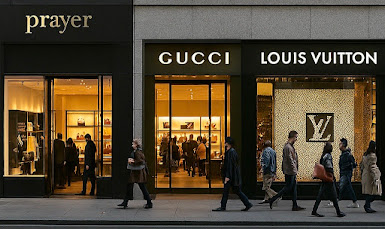Let’s clear the air. You’ve probably heard it a thousand times: “If it’s made in China, it must be fake.” But let’s not be so quick to sip that tea—because some of your favorite luxury brands? Also made in China. The real question isn’t where it’s made, it’s who’s making it and how.
I’m speaking from experience here—years of experience that costed me more than just coins. Trust me, I’ve been on both ends: duped and disillusioned, then later connected and clued in. And if you’re thinking of diving into the world of designer dupes, reselling, or even just curious about the behind-the-scenes of fashion’s gray market, buckle up. It’s a wild ride.
Not All “Made in China” Is the Same
Let’s break it down: Made in China doesn’t automatically mean it’s poor quality. In fact, some of the exact same factories producing items for top European fashion houses also produce goods for other clients—some legally, others… well, not so much. What matters isn’t the country, it’s the factory, the craftsmanship, and the materials.
Some fashion brands even quietly outsource to China for parts of their production process, from stitching to packaging. They just send it back to Europe for “finishing touches” so they can slap a Made in Italy label on it. It’s all marketing, baby.
Understanding Grades: A, AA, AAA, 1:1
This is where most people get lost in the sauce.
You’ll see vendors on WhatsApp, Instagram, and TikTok shouting about “AAA quality!” and “1:1 mirror copies!” But do you really know what that means?
Here’s the real tea:
- A or AA: These are lower-end replicas. They might resemble the real thing, but only at a glance—and the materials, stitching, and logos usually give it away.
- AAA: Slightly better. Think of it as the “budget luxury” of the replica world. Better materials, decent structure, but still very hit or miss.
- 1:1 or Mirror Quality: Supposedly identical to the authentic piece. These are usually made in the same region or even same factory lines as the originals, using similar materials. These can be very close—but only if you’re dealing with a trusted, high-level source.
Spoiler alert: anyone can say “1:1”—that doesn’t mean what you’re getting is actually that. And if you’re paying $80 for a “mirror-quality” Chanel… you’re probably being played.
The Trap: Overseas Ordering Without Knowing the Game
This is where people fall flat. They find a vendor online, see some flashy photos, get hyped, place an order, and boom—regret in a box.
A lot of vendors will post sample photos from a good batch, but when it comes time to ship, they’ll send you a cheaper version from a different factory. It’s a classic bait and switch. Others don’t even know what quality they’re selling—they’re just middlemen trying to make a quick flip.
And don’t get me started on “TikTok plug” culture. While there are some legit connects being shared, a lot of it is smoke and mirrors. By the time you message that vendor everyone’s raving about, they’re already flooded with orders and cutting corners to keep up.
The Only Way to Win: Boots on the Ground or a Trusted Agent
Look, if you really want top-tier replicas—or even just quality fashion items from China—you either need to go yourself, or have someone there who knows what they’re doing.
A good agent can:
- Visit factories and suppliers in person
- Verify quality before shipping
- Handle sample batches
- Negotiate prices and avoid middleman markups
- Ensure you’re actually getting what you paid for
Yes, you’ll pay more for an agent. But if quality matters to you—and you don’t want to get scammed again and again—it’s worth every penny.
Final Thoughts: Be Smart, Not Sorry
China produces everything—the good, the bad, and the downright embarrassing. The secret to navigating this world isn’t to avoid China—it’s to understand it. Learn the grades. Ask for QC (quality check) photos. Know what you’re paying for. And if you can’t go in person, find someone who can.
Otherwise? You might end up like I did once upon a time—excited to unbox, only to find something that looked like it came from a carnival prize counter.
So be smart, do your research, and most importantly—don’t let hype or hashtags rush your decisions.
Bonus Tip:
If you’re ever unsure about a vendor or an item, check out communities on Reddit, Discord, or even Telegram groups where people share legit reviews, QC pics, and vendor feedback.
There’s a whole world of fashion detectives out there helping each other avoid the fakes of the fakes.


.png)

.png)